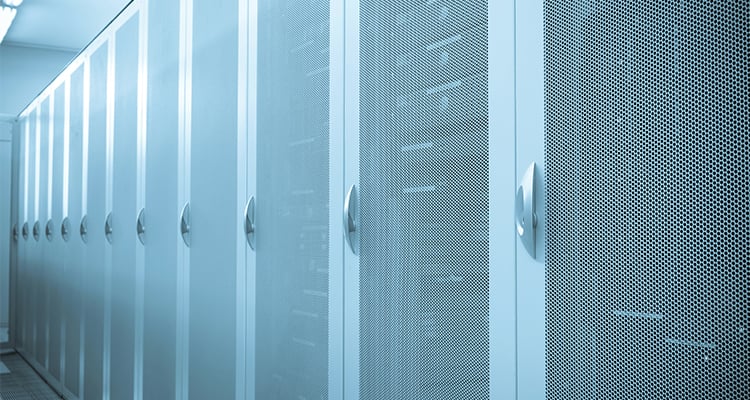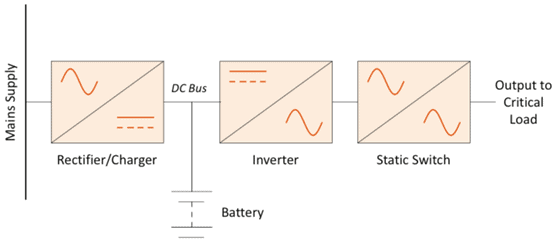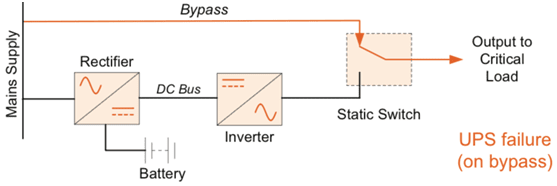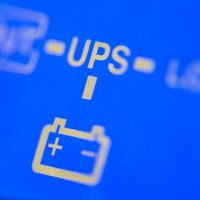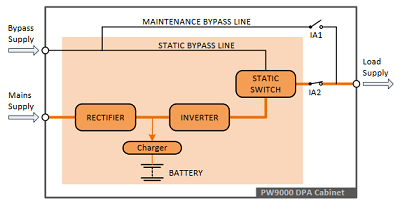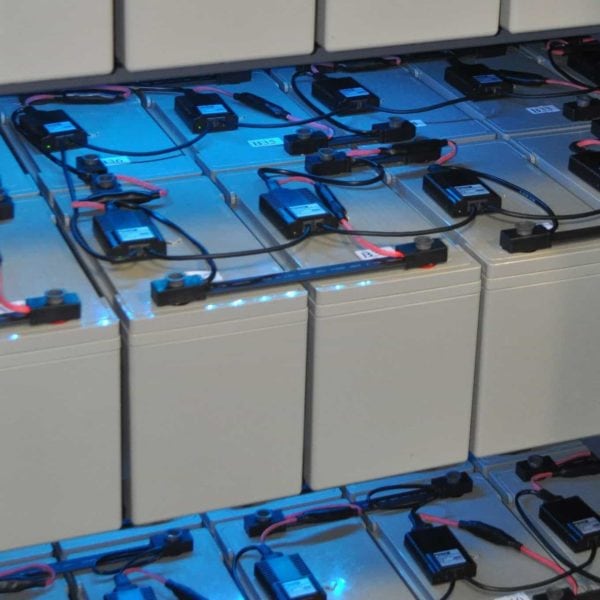OK, so we’ve looked at what an uninterruptible power supply is, what it does, and some of the different forms an uninterruptible power supply system can take. Before we move on to other topics, I wanted to cover the major components of a modern, online UPS system – Otherwise known as a ‘double conversion’ UPS power system.
Aside from being the only true form of uninterruptible power supplies – i.e. completely free from load breaks – online UPS systems comprise the entirety of our uninterruptible power supply product range, so it only makes sense to explain how they actually work!
This is going to be the short, easy-to-understand version of the story – If you’re interested in the complete and (extremely) thorough version, as well as a lot more besides, I strongly recommend picking up a copy of the UPS Handbook.
The Anatomy of an Online UPS System
An online UPS system comprises four main parts: A rectifier/charger block, a UPS battery, an inverter and a static switch. To see how these components fit together, have a look at the following simplified block diagram.
Rectifier/Charger block– Although I’ve listed them together, the rectifier and charger can either be separate modules or combined as a single uninterruptible power supply block. They perform the same function, either way, so for the sake of simplicity they are displayed in our block diagram as a single component.
The function of this combined uninterruptible power supply block is to take AC (Alternating Current) power from the mains and convert it to DC (Direct Current) power, which is required to charge the UPS battery. From there the charger directs the power supply to the battery in order to maintain the charge, and the rectifier provides a stable DC current directly to the inverter, all via the DC Bus.
You’ll notice that the DC Bus didn’t get its own explanatory section in this article, and that’s because it’s simply a fancy name given to the connection between the uninterruptible power supply block, UPS battery and inverter.
During times of power outage or fluctuation (typically outside +10% to -20% of normal) the charger shuts down, and the UPS battery provides DC power to the inverter instead.
UPS Battery– As previously discussed in the article on battery maintenance, most modern online UPS systems (ours included) utilise a lead-acid UPS battery. Since we’ve already covered the inner workings of batteries I won’t bore you with it again – If you haven’t already, I’d suggest following the link and having a quick read.
Inverter– The inverter provides the second half of our double conversion UPS power system process, by converting DC power from the rectifier/battery back to AC power. We needed DC power to charge the UPS battery, but it’s AC power that’s required by your critical loads, so this secondary conversion process is vital.
One of the main benefits of an online UPS system is that it provides the greatest level of power protection to your critical load from power ‘events’ such as spikes, sags, surges, electrical noise, and so on. This is because, unlike the other types of uninterruptible power supplies described in our last article, all of the power supplied to your critical load has been routed through the uninterruptible power supply and thus undergone the double conversion process from AC to DC and then back to AC.
Static Switch– Of course, there is one scenario we haven’t discussed yet, and it’s a particularly important one to consider when implementing an online UPS system.
We know what happens when there’s a power outage, but what happens if there’s an uninterruptible power supply failure? With an online UPS system, all power to your critical load comes via the uninterruptible power supply… so if that fails it’s going to be just like having a power outage without a UPS power system, right?
Well thankfully not, and that’s down to the static switch.
The static switch has two modes; by default, the switch will accept AC power from the uninterruptible power supplies, but it also has the option to accept AC power directly from the mains, or ‘bypass’.
Switching over to mains power is far from ideal, so in the event that your critical loads are transferred to raw mains power, it will be accompanied by an alarm or warning condition to ensure the UPS power system issue is resolved as quickly as possible.
Keeping Bypass to a Minimum
When I say that switching over to raw mains power is far from ideal, I’m not being flippant.
If you think back to my earlier article explaining the function of an online UPS system, you’ll recall that power protection against disturbances is one of the most important functions of uninterruptible power supplies.
During periods of power system failure, this vital task is foregone.
Our fancy online UPS system is temporarily relegated to little more than ornamental status.
This is why uptime is so important. At KOHLER Uninterruptible Power we’re proud to say that our standalone solutions offer 99.999% (five nines) uptime, with an amazing 99.9999% (six nines) in the case of our modular UPS systems.
To put that in terms that are easier to understand, our modular UPS systems boast an average of just 31 seconds downtime per year, or more than six minutes over an average 10-year UPS service contract. Standalone UPS power supplies follow-up with an impressive average of just over five minutes downtime per year, or under an hour during the course of the same 10-year service contract.
Of course, these are simply averages – I’m not suggesting that an online UPS system failure can be resolved in mere minutes. UPS technology has come on a lot in recent years, but we’re not quite there yet.
The time taken to resolve a modular UPS systems failure is substantially lower than with a standalone uninterruptible power supply and it is often possible to repair or replace individual modules without ever needing to switch over to a bypass power supply.
It is for these reasons that KOHLER Uninterruptible Power Ltd. have increasingly recommended modular UPS systems to our clients in recent years.
If you require more information on any of our uninterruptible power supplies services or products please use our contact page or call 0800 731 3269.
Follow us on LinkedIn for regular power protection industry articles & company information

